What we learned from the Community Shield
Why Arteta went with Havertz at striker, what we noticed in the press and the block, and how the attack looks moving forward. Plus: thoughts on the Thomas/Rice pairing, Timber, Saliba, and much more
There’s a saying with parenting: you don’t raise the child they are, you raise the adult they will be. I’m not so sure how much I actually believe that, but it helps my introduction, so here goes.
This Arsenal pre-season has been different than the last. Whereas last year was about establishing and maintaining new levels, this one has been more of an information hunt. Prior to Manchester City, at least, what’s been clear is that Mikel Arteta is not only managing towards the moment he faces. He’s on a quest to learn about the team they will become.
Here’s what he said on Friday, in a running theme:
“We are seeing a lot of things, the team gives you a lot of information every day and some connections and relationships that you didn’t expect. Sometimes you feel ‘look what is happening there’ and it is natural. So we have to have our eyes open to that and not just close the door to something because that is not the best thing to do.”
In the Community Shield, there was plenty to observe and learn.
As always, my intent is not to cover the game in full, but to put a few interesting aspects under the microscope. Let’s dive in.
👉 The choice at striker
Warning: I’m pretty unabashedly excited about what I saw on Sunday.
So, instead of risking this article just becoming an uninteresting laundry list of Nice Things, I’ll start off on a more measured plane.
Arsenal are working through a bit of a “short blanket” question at the present. This is a phrase I think I saw in a Total Football Analysis Magazine piece some time back, referring to the choice: cover your legs, or cover your arms?
Last time out against Monaco, there were a few dominant characteristics. The first area of note was a decision for warm legs: the much-awaited debut of the Thomas/Rice pairing. You may remember we wrote a loooong scouting report on Declan Rice before he signed — before Havertz was linked, as well — and here were some of the take-aways at the time:
There is likely to be no wrong answer to the “6 or 8” question with Rice, but it may be the difference between a top-10 world midfielder and an all-timer.
Rice’s flexibility is a feature, not a bug. I don’t think Arsenal has to rigidly choose between playing him at the 6 or the 8 in the short-term. Whatever his role, what matters most is to max out his defensive coverage and his opportunities to carry the ball forward with abandon.
I would suggest that Rice currently has marginally more plug-and-play potential at the 8, and more long-term potential as a best-in-world type at the 6.
He is probably least impressive with his back to the goal in the first third; his tape doing modern build-up for West Ham is still scarce, after all these years, and he hasn’t been well-served by his coaching to date in this regard. I thought to myself how any issue I have with his game back there might immediately vanish with a certain Ukrainian as a pivot partner, allowing him to be more central. Any issues here do not seem to stem from a lack of fundamental skill, but of practice.
As such, with the squad constructed as-is, I would play him at the 8 a lot in the early days, where we can feel reasonably certain about his levels. Despite his experience there, we are still in the “insufficient data” period of his most advanced work in the box. If he turns into a G+A machine, simply keep him there, and move other parts around.
Against bonafide low-blocks — which may be a good amount of games, particularly in league — I’d look for him to patrol the middle as a 6, with a more 10 type placed at LCM. On the current squad, that’d lean towards Vieira, Trossard, and ESR, but will likely include a transfer addition. If one of them starts showing signs of eliteness, or if the transfer option looks like a nailed-on starter, this plan just speeds up.
Rice looked more comfortable at the 8 from the jump, and did some explosive and wide toco y me voy stuff that he flashed at West Ham but didn’t get the chance to demonstrate consistently because of his other responsibilities. As a reminder, he had 24 touches in the box all last year:
He also narrowly missed a goal.
Whereas most of Arsenal’s build-up work last year was done in a 3-2 that evolved into a 2-3, the team built up in a 4-2-4 shape against Monaco.
Without the presence of Zinchenko, this led to a heavily-reinforced first-phase look. Even more, this would often be supported by ESR or Nketiah dropping in to break the lines after Rice dragged a midfielder wide, like so:
The nice part here? Rice offers sufficient threat as a dribbler on the wing that he commands attention, and Timber offers sufficient threat as a pivot that he deserves attention, too. Last year, a defender may have cheated off Xhaka, with the confidence they could get back in place as needed.
Which brings us to our other point of conversation from Monaco: Eddie Nketiah. He was active, crisp, technical, muscular, energetic, and most importantly — well-rounded.
As you’ll see in his overall action map, he was everywhere, taking on the role of an expansive false-9 with aplomb, initiating 25 duels in all, and generally looking like a pretty “complete” central forward:
There is a “but,” however, and it doesn’t really have anything to do with Nketiah’s performance, which was stellar. It’s more about his evolving profile, the trade-off involved with Rice in the 8, and the downside to such a fortified 4-2 build-up. It’s the short blanket problem: your legs are warm, but your arms are cold.
Here, Nketiah came down to accept, but then swung around and prodded the back-line. Rice is helping build-up and stays put after Thomas sends the ball up to the 9:
After an excellent run through the middle and out wide, Nketiah brings the ball to the edge of the box and crosses it away — but Rice is out of the picture, and ESR and Vieira arrive on the scene too late. Nobody home:
Similarly, when Nketiah would drop deep and then rip off a really clean turn, as he did here, he’d get surrounded in no time — because the defenders didn’t have anybody else to worry about. See here:
The team was only 3-of-16 on crosses for the day, and interestingly, saw an increase in possession and control when Havertz came on for Rice.
(The idea of Kai Havertz coming on for Declan Rice, in the same midfield role, for Arsenal Football Club, in the year 2023, is still pretty bewildering, no?).
Contrast that to the previous game against Barcelona, when Havertz (in the “left-8,” or whatever you want to call it), just happened to be there to knock home a bounce behind the striker and the other advanced midfielder:
In the words of Mikel Arteta: “the team now demands somebody here.”
This is a long way of saying the following: an extensively dropping false-9, and a 6-man build-up (with two lower DM’s), not to mention an active keeper, is … excess materials.
Counting that keeper, you might be building in an 8v4, which introduces redundancies and crowdedness deep, and leaves attacking options sparse once the break is on. One of the core advantages of a “False 9” is to drag CB’s around and clear a zone for others to fill.
With Rice and Ødegaard unlikely to do that, you get some of drawbacks of a false-9 without enough of the benefit. In the more-expected shape, one of those Monaco crosses may have found a home.
This helps illustrate why the still-evolving Nketiah, not to mention the red-hot Trossard, were not chosen to start against Manchester City. Instead — as the zenith of our weekslong focus on the long-ball — Kai Havertz made his debut at the Arsenal 9.
The decision was for “warm legs.” With the aid of Havertz as more of a central target man, the hope was for a longer blanket.
👉 The players and strategy out-of-possession
We’ve covered some of the trade-offs with a 4-2-4 (that morphs into a 4-4-2 out-of-possession), so it’s time to share the advantages.
I won’t mince words. It’s early, and it’s not there yet by any stretch, but this lineup — with a White, Saliba, Gabriel, and Timber backline, fortified by Partey and Rice in the mid-block — looks the stuff of Champions League dreams, and carries best-in-world max potential in the press. But some vulnerabilities must be addressed before we can say that with any confidence. (Did I just, indeed, mince words?)
To start, there was promising news for Gunners. Whereas Pep purpose-built a gameplan to destroy the last Arsenal he faced, going with a “double-6” build-up before blasting it long to Haaland, he did not feel the confidence to do that against the improved mint. Saliba, Rice, Timber, and it should be said — a healthier Thomas — steered him away from his strategy. Instead, Manchester City stayed short — their average goal-kick was 6.6 meters, compared to 66.4 from Arsenal.
We can argue about the proper lineage of such build-ups, but yes, it looked like Pep De Zerbi out there.
On Arsenal’s side, it was an inherently pragmatic gameplan. The “door hinge” of pressers in Havertz, Rice, and Ødegaard shaded play to the Manchester City left:
There is a relative ease in the pressing decision against Man City here: should one push the ball towards Akanji/Aké, Dias, and Kovačić on one side — or Stones, Rodri, and Walker on the other? Easy. The clarity of this call may have led to the big Gvardiol outlay.
While parts of the pressing plan may have looked relatively novel, especially with Rice pushed so high, there weren’t too many structural differences to the last time Arsenal faced Brighton, for example, and Xhaka served largely the same role. Rice is just able to fill the responsibilities with some more aggression and athleticism, and they were perhaps a touch more compact and less jumpy than they were here:
The very two first things I mentioned in that scouting report of Rice at the 8: a) second-ball recoveries after aerial duels, and b) this role in the high-press. We remember all too well how destructive he can be when set loose up top.
What was a bit novel was the rationalism of the press triggers. They had objectives beyond winning the ball high. If the ball went out to Akanji, Saka went hard. If the ball went to Dias, and his angle back to the keeper was cut off, Ødegaard went hard. If the middle pressers thought they caught Kovačić or Rodri sleeping, they went hard. However…
Otherwise, and by and large, they were relatively relaxed — content to cut off central passing lanes and ferry play to the Manchester City left. If the ball got out to Stones, they calmly retreated back to the 4-4-2 block. If Ortega carried it up, they were careful not to bite. Saliba basically man-marked Haaland, as Gabriel did Álvarez. You didn’t see a lot of Timber and White storming up the wings as reinforcements, for example.
In all, this helped direct play to the less-vibrant Manchester City left:
From Arsenal’s side, it was interesting to see them feel out their “aggression dial” in real-time. The initial period was spent settling into their block, and after an opening stanza, things started to look pretty disciplined — and claustrophobic for Manchester City. You can see the difficulty in shuttling the ball to Haaland or Álvarez from here:
Once things started feeling solid, the team started evolving into a more fighting stance.
Here, after a dead-ball, Havertz communicated to Rice to step up, who then created a trap for Thomas. It’s a little blurry, but Rice is literally pointing at Partey to jump while tackling:
But Thomas had a different idea. To Rice’s marginal frustration, he stuck back and allowed Kovačić to receive:
There are a few explanations for this. Thomas may have simply been gun-shy after last year’s KDB/Haaland mauling, or he may have been acting on guidance to shadow-mark the strikers instead of going with the normal Arsenal trap. While the ball wasn’t won, the team kept regrouping successfully, but you generally don’t want to get caught in-between philosophies like this.
Whatever was the case, this period had a few characteristics. Arsenal was increasingly solid in their coordination, which forced Man City to be a little bit more adventurous to unsettle the block. This allowed Arsenal to respond with more controlled aggression:
That was one of three different “foot-in” moments that led to the possession in which Havertz had Arsenal’s first big chance of the game.
I rewatched The Invincibles documentary recently. When talking about Patrick Vieira, Sol Campbell had this to say:
“It was great to have him in front of you. Because you knew that, by the time they got to you, they were probably knackered and beat up.”
Remind you of anyone?
Out wide, you’d notice the wingers (Martinelli and Saka) truly doubling the wide men. This is something that has been used against Arsenal to great effect, and it isn’t just about shutting down a dangerous player — it’s about cutting off their ability to dialogue with the more central players.
Which brings us to Jurriën Timber. Last week, I ran out of time for a second post, so wrote a Twitter thread about Arsenal’s relative “openness” when out-of-possession throughout the pre-season, and whether there was reason for concern. The general thrust of the findings was that it was a lot of normal settling in: by retaining less possession, and being a little later (or simpler) with assignments, they were easier to attack and manipulate.
But there was another, more structural thing of note. Arsenal is working out its backline dynamics. From the thread:
What is usually thought to be a “Zinchenko Problem” is really more of a clear invitation for opponents to attack that spot, regardless of its occupant.
The huge majority of xG and attacks are still coming through that side, despite his absence. I hope that helps add context to some of the criticism Zinchenko receives, fair and often unfair.
The rest shape leaves the wings open by design — like chess, control of the middle is paramount. From there, Arsenal builds an obstacle course for its opponents to get through: counter-press, tactical foul, offside trap, forcing you away from goal, galloping giant CB, reinforcements arriving, keeper, etc.
And that’s why you’ve still seen a bunch of “Zinchenko moments” from the likes of Tomi, Tierney, and Kiwior. It’s hard to add defensive solidity, midfield control, up-pitch contributions, and have the speed to track back all at the same time. A tall order.
From an opposing perspective, you can attack Arsenal’s right (usually a deeper, superstar CB and a conservative CB-hybrid FB) or left (the spot behind an adventuring LB, covered by a front-foot CB), which is an easy choice.
So, the natural option would be to invert some from the other side, which balances things out. But that has another problem — it fucks up the backline dynamics and puts Gabriel at CCB, limiting Saliba’s impact and stripping Gabriel of his Gabrielness.
Enter Timber at LB, which I think might be the low-key biggest development of the pre-season. He can be a CB hybrid, go wide, or invert fully — and even interchange all that with Rice.
While we talk about this being a “tall order,” you have to be continually impressed with Timber — who has settled in immediately, and makes the left-back position less of a Sophie’s Choice between attacking and defending. I have to think his immediate comfort at left-back is one of Arteta’s “connections and relationships that you didn’t expect,” and it could have major implications. He had so many shot-blocks and calm rotations out wide, and the pressure that the position is put under came into clear focus as soon as Timber came off, when Tierney played a role in the rather-immediate concession.
I could show you any amount of little body feints, dribbles, and defending — but instead, I’ll show you this. Here’s Timber darting up the middle as a second striker:
The defending was not impervious, however, as Pep’s velociraptors have a nasty of habit of learning how to open doors.
Guardiola shifted extra bodies to the midfield, complicating assignments. With Akanji providing too easy a trigger, he shifted up the pitch as a quasi-winger, as did Walker, and Silva dropped in two places: centrally, and all the way to left-back. This made the door hinge semi-clumsily swing the other way, which provided a spot for Foden to drop into:
You know what happened next. Partey simultaneously over-committed and under-committed, taking an awkward angle on the initial play, and not having a tactical foul to offer after an early, highly-questionable yellow. Foden turnt him and burnt him:
But here’s another thing to watch out for. With extra players in the midfield, Rice and Partey now have wide-ranging, man-marking responsibilities — with makes it a little easy for Rice to get dragged out of the middle. By Palmer dropping into a spot that is nominally for the Manchester City right-back, Rice now has to fight to stay in front of the play. He narrowly does, but isn’t able to fully disrupt the counter:
Thanks to the new signings and the returns from injury, Arsenal have improved in a way that will prove useful against top teams — in this shape, they will be much harder to go long against, and big strikers will have a tougher time. That said, there is still a stubborn issue: what happens when the midfield is packed, when their challenges don’t get home, and when players are dragged wide.
(As I’m hitting post — I take days to write with these things, regretfully — I see Jon Mackenzie has now tweeted about many of the same concepts, likely in better detail. Would encourage you to check that out. I don’t think I contradicted him anywhere, but if I did, trust his version of events.)
👉 The plan of attack
The thesis from the initial part of this piece was fairly simple: if you’re going to go for a 4-2 build-up, it’s best to have a target man up top who can help you play over the press. A #9 who drops into the first-phase too much will imbalance things.
Here was Ramsdale’s distribution, which was solid but a little fizzy and imprecise when directed long towards Havertz:
It’s OK — he more than made up for it with some huge saves.
On the target manning: Jesus can do this as well, by the way — quite well, in my opinion. It is less suited to the abilities of Nketiah and Trossard. For all his development, Eddie is still a career 40/115 (25.8%) in aerial duels.
If you take a look at the passes received by Havertz and Nketiah in the first halves of their respective games, you’ll see Kai staying in the “spine” of the attack more, which suits this kind of game better:
Even in its successes, you’ll see some of the benefits and trade-offs for this kind of practical reinforcement to the backline.
In the lead-up to the first big Havertz chance that changed the flow of the game, Rice dropped down to a libero position between Saliba and Gabriel. This enables Saliba to unsheath a weapon that usually stays under wraps — his forward carrying ability:
With Saliba all the way across the halfline, he rifles it into White, who had snuck in with a jail-break run behind Saka, who had moved into the half-space. Havertz is waiting centrally, like a … normal striker:
And White crosses it in, Havertz gathers it in a spin, and shovels it towards goal. The rebound goes towards Martinelli, who shoots and is blocked:
(Saliba and White were the two best players on the pitch for me, by the way.)
That chance was instructive. Facing a team like Man City, Arteta opted for “warm legs” — Rice helped unlock any progression from below, and Saliba was able to carry forward with abandon. Havertz, in the “left-8” role, would have offered no such support. That said, you can see the marginal cost in the final screenshot: against a weaker team, where such low support was less necessary, Arsenal would likely have another attacker in that frame.
Even with such constraints, I thought Havertz was a little undersupported when long-balls were headed to him, and Martinelli’s role was too ancillary.
My quick idea for that would be to push Timber up higher to hold width at the winger level, which should allow Martinelli to shade inside and do more associative runs off of Havertz. He did it a little, but could do it more. Here’s a silly, quick, imprecise graphic of a possible goal-kick shape:
This will help Havertz, who always looks best when he’s not purely man-marked by a CB, but interfacing and manipulating space with a buddy. The team ultimately still needs to create more chances in a game like this.
Havertz performed well, and reinforced the need of a profile like his in a shape like this. It wasn’t perfect. He may have some persistent limitations when finishing with his right, or when steering away from his more “automatic” goal mechanisms — headers and left-hooks across his body. But his feel for pockets of space is so elite, and despite #aesthetics, he runs everywhere, and adds an element of intimidation in the press. To see this much, this early, is certainly promising.
After the goal, the gloves came off, and we got to see a little bit of Arteta’s preferred YOLOball formation for this season. Where he went with a preposterously-forward 3-5-2 at times last year when chasing a goal, he eventually settled into just using the normal shape with more aggressive profiles within it. Plus, Reiss.
This time, he pulled a trick we’ve been hoping to see in these parts. 3-4-3, motherfucking diamond:
Here’s what it wound up looking like in practical application:
It was a tiny sample, so there’s little to draw from it. I will say that as a goal-chasing platform, I like it plenty.
Would you like to know the backline formation when this progressed up to advanced areas?
There wasn’t a formation.
There was a man: William Saliba.
1-3-6.
🔥 Final thoughts
There was so much to observe, learn, and like from this one. Above all, it was nice to see such a strong eleven at a time when there were injuries to three key players (Jesus, Zinchenko, and Jorginho), not to mention the absence of a striker who the CL finalists are after. To be able to play that well with some new pieces is an achievement in itself.
If you think that the double-pivot lineup with Timber at LB has the looks of a giant-slaying, Champions League iteration — but that many (most?) other opponents should face more attacking thrust — then we have similar thoughts. This can be solved by Rice simply playing more advanced, sure, but is more likely to be found in the likes of Havertz, ESR, and others in that spot. Hopefully I was able to demonstrate the benefits of a false-9 in our more standard form, while showing the limitations of it in a reinforced build-up like this.
The press offered reasons for excitement, and a couple reasons for pause. The thought of Havertz/Jesus, Rice, and Ødegaard baring down on a box should be the stuff of nightmares for many foes. But once the opponent packs the midfield, Arsenal are still working through the over-burden of their markers, and there were some Monaco-like openings in the midfield as soon as Pep sent reinforcements.
On the low-block with this lineup, I have no notes. It looks like something pretty special.
What else, what else? It’s mostly a gush-fest:
I mentioned it briefly, but Ramsdale deserves enormous praise for his performance — as much as any, he’s the reason Arsenal stayed in the game.
Two other performances I mentioned but deserve reinforcing: Saliba and White. That’s one of the better performances I’ve seen White put in. He was so consistent last year, with the exception of 2-3 games where he looked so tangibly “off” physically. If Timber gives him the ability to manage his body at a higher level, there are big benefits.
I’ve tried to muster optimism for Tierney in recent weeks, but I will admit it requires some effort on my side. Timber’s absence immediately showed how much pressure that spot is put under schematically. I can forgive him for the slips, but in a squad overrun with so many tight-space technicians, the hoofs-to-nobody are killing me. I’ll be supportive whatever happens here, but he ultimately plays in one spot, and wouldn’t be in my top-two attackers or top-two defenders in that role. I’d love to be wrong.
Trossard is so tidy and hard to defend around the goal. While I hope Nketiah earns significant minutes, and it’s very close, I’d marginally prefer Leo as the direct backup 9 in the normal 4-3-3 (with Havertz at left-8). That pairing figures to be potent, and should also empower Martinelli to come inside.
Trossard isn’t the right fit for this kind of starting lineup — which requires transition threats and target men — and that’s OK. He did his job. So did Nketiah; when the team needed his expansive energy, he gave it, and we should remember how many times he comes in during different situations (with the team protecting a lead instead of looking for a goal).
Saka showed how he can beat Akanji, and even when he wasn’t doing that, he was vacuuming up enough attention to clear way for the likes of White. He’s impactful on his off-days.
As I complete this, I understand how much I’m underappreciating a huge, tireless Ødegaard effort against a top opponent. I feel your look, and I agree with it.
Gabriel with a fairly clear man-marking assignment and ample support around is the best kinda Gabriel. He was faultless.
Just a spare observation when I was thinking about set pieces: this lineup is big.
Here is why I’ve always remained steadfastly optimistic about Vieira: he kicks balls real good. This is the end of my scouting report.
In conclusion, this guy plays for Arsenal:
I know you’ve already watched it a bunch. What’s another 10 times?
Happy grilling.
❤️


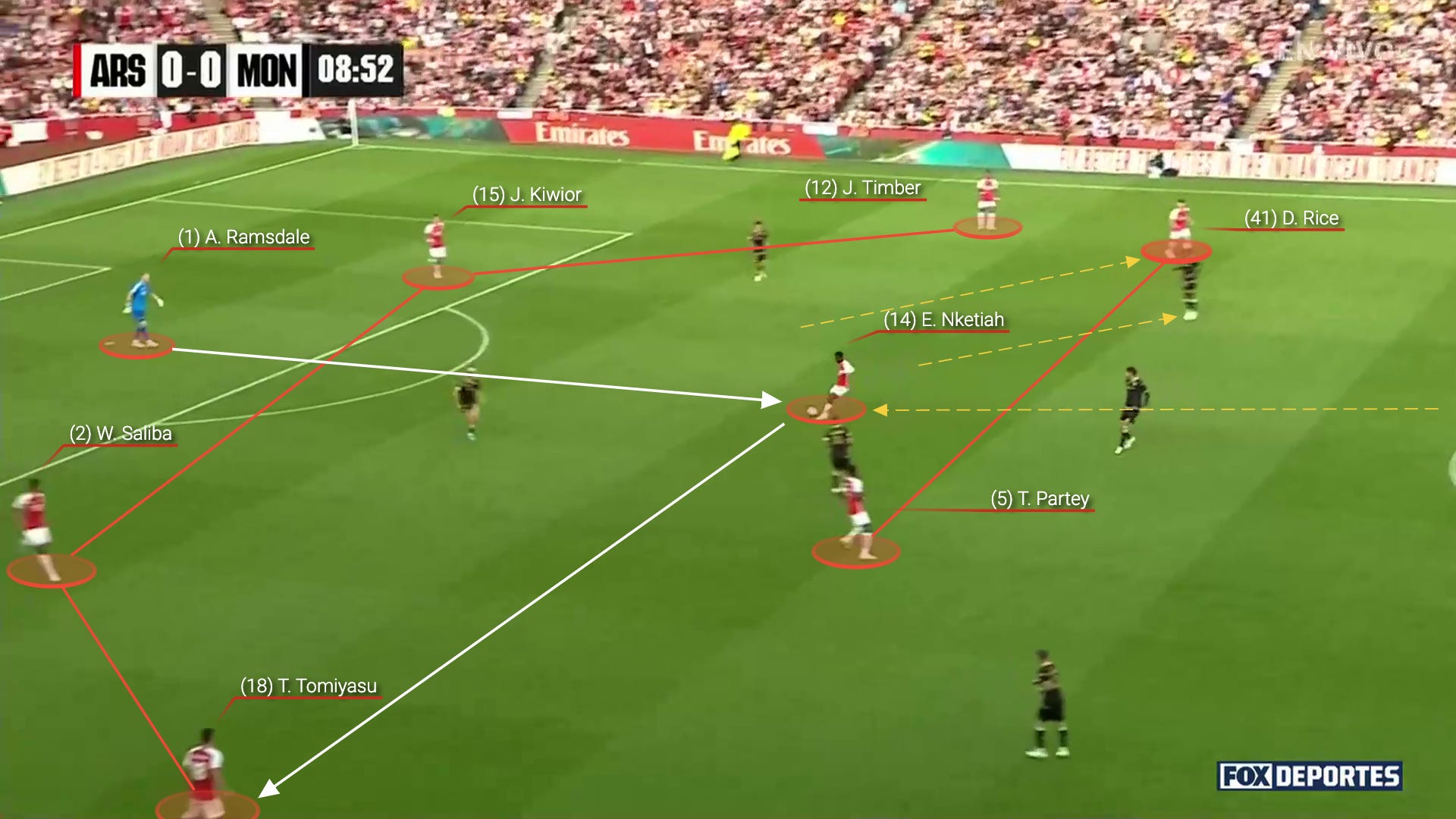
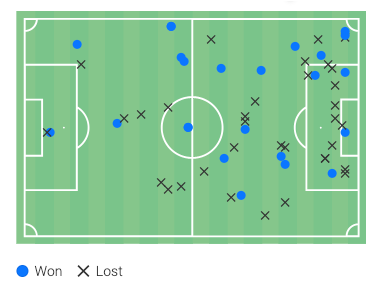
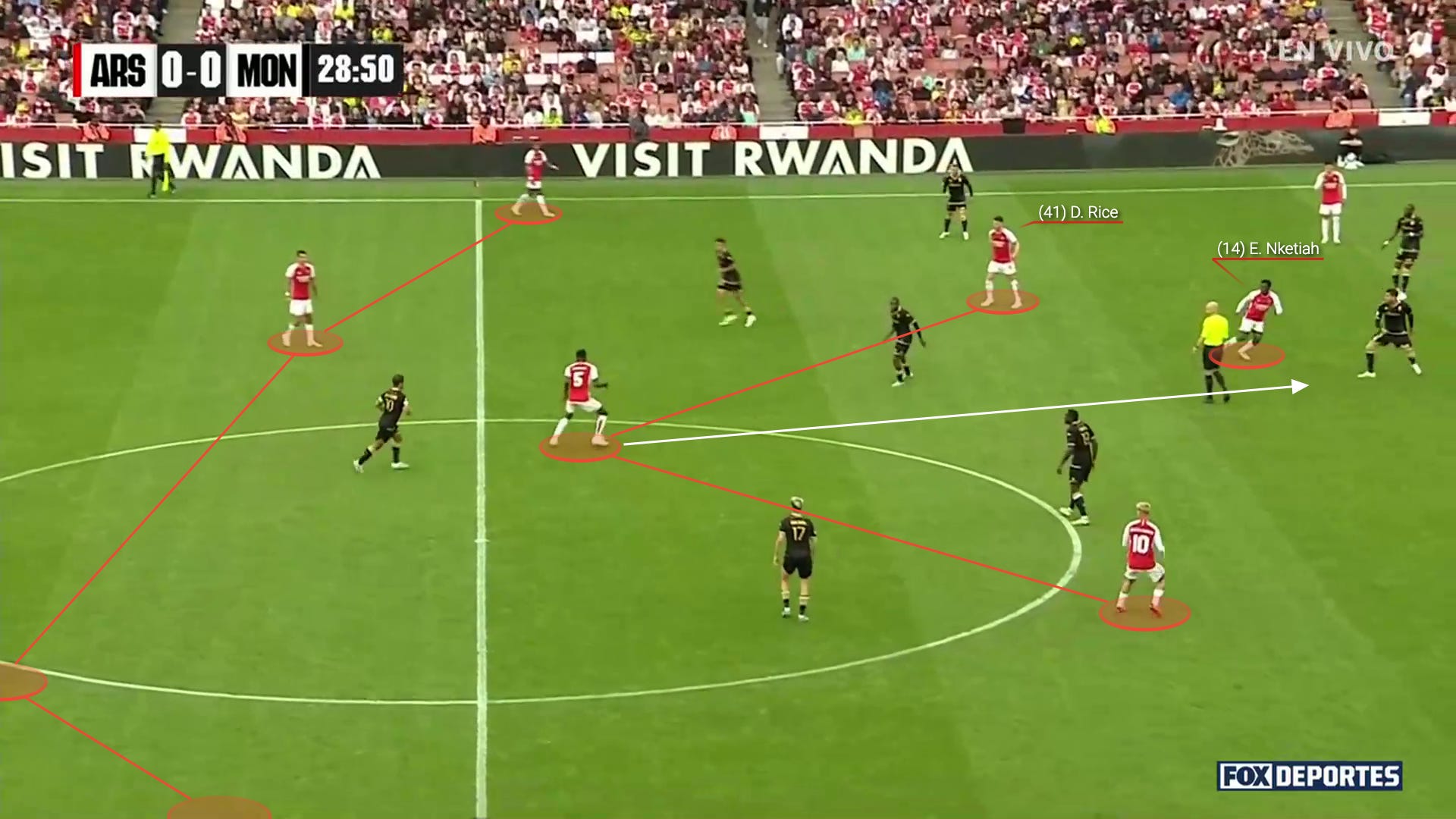
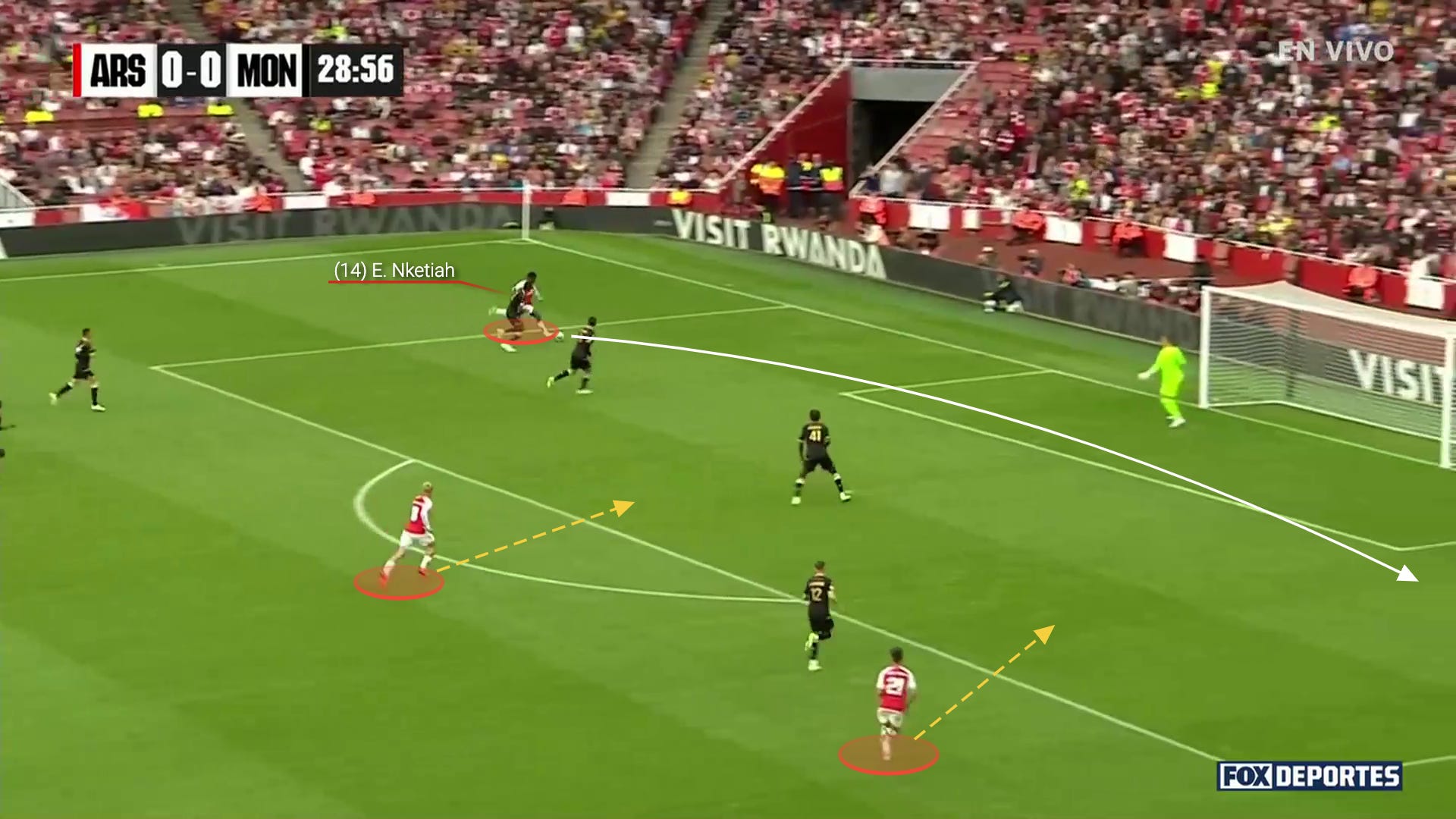
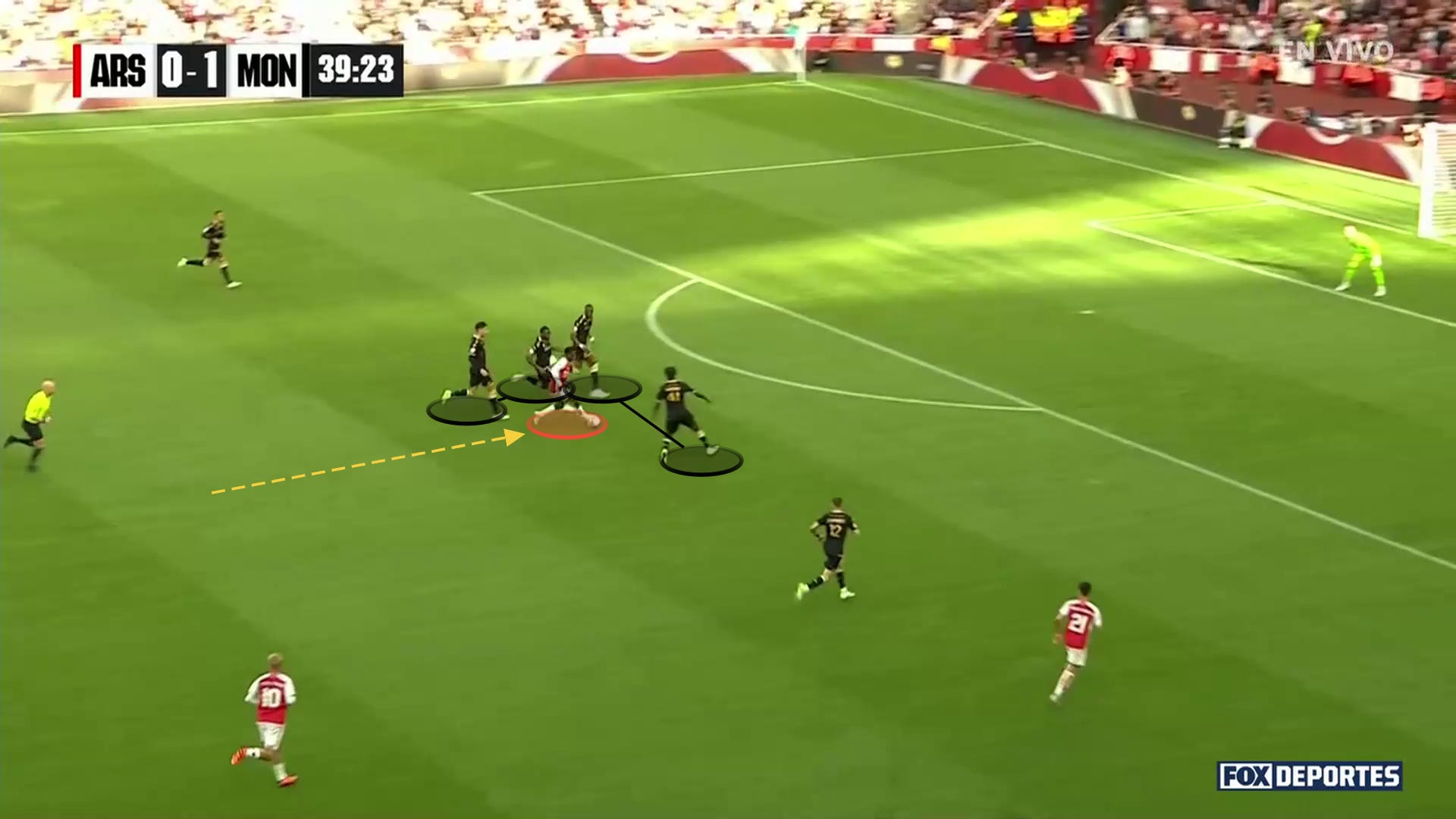
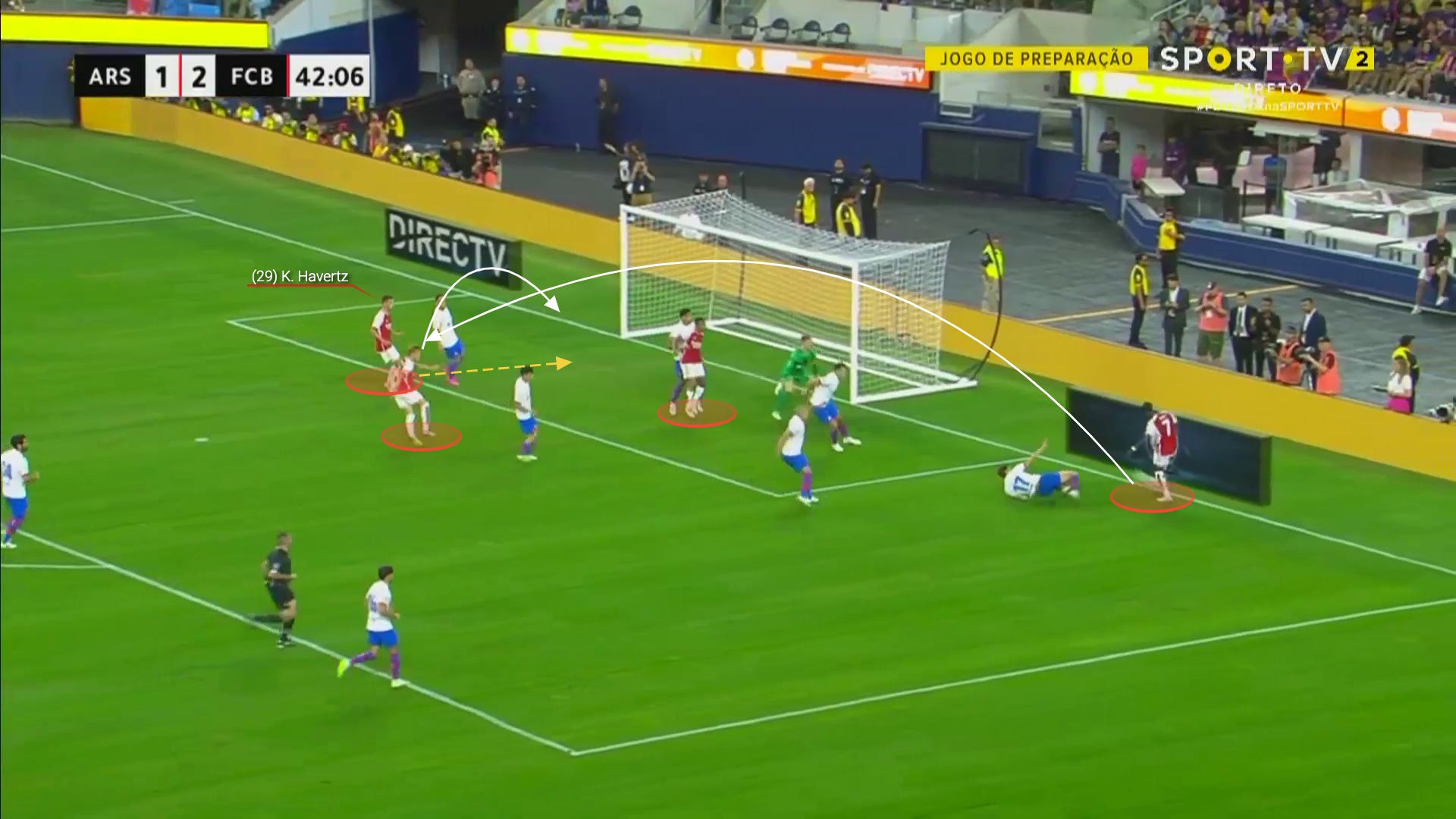

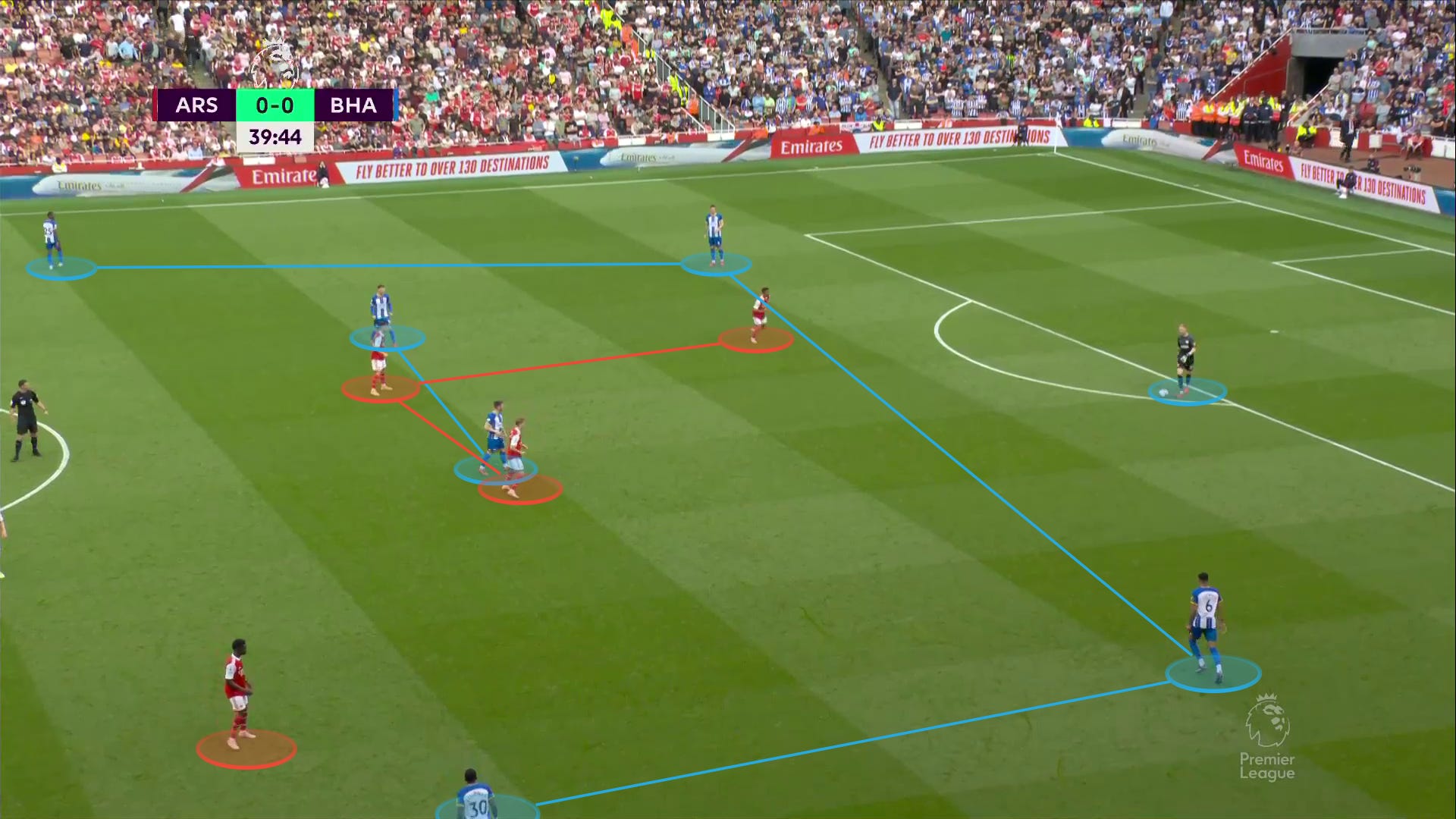


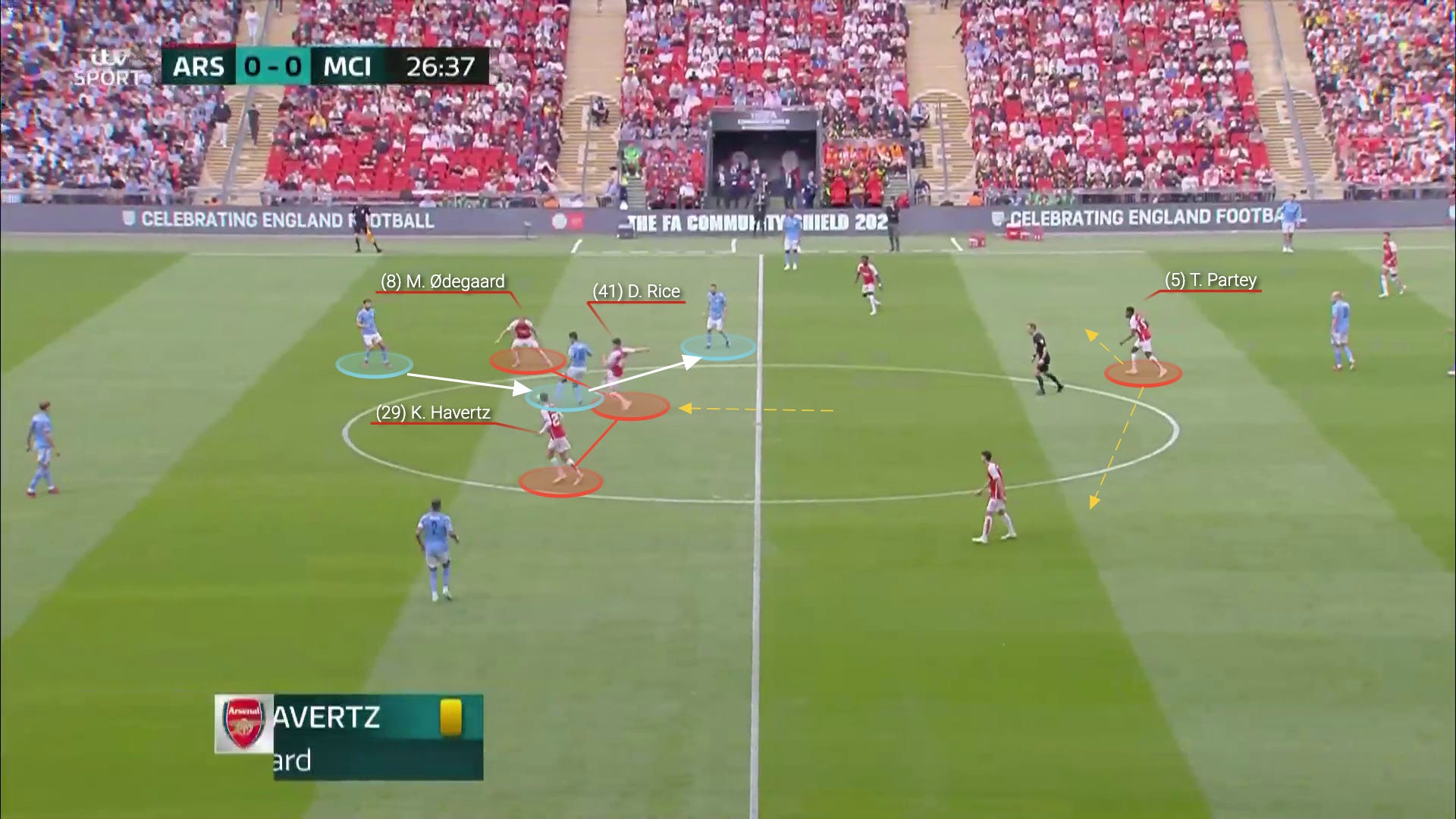

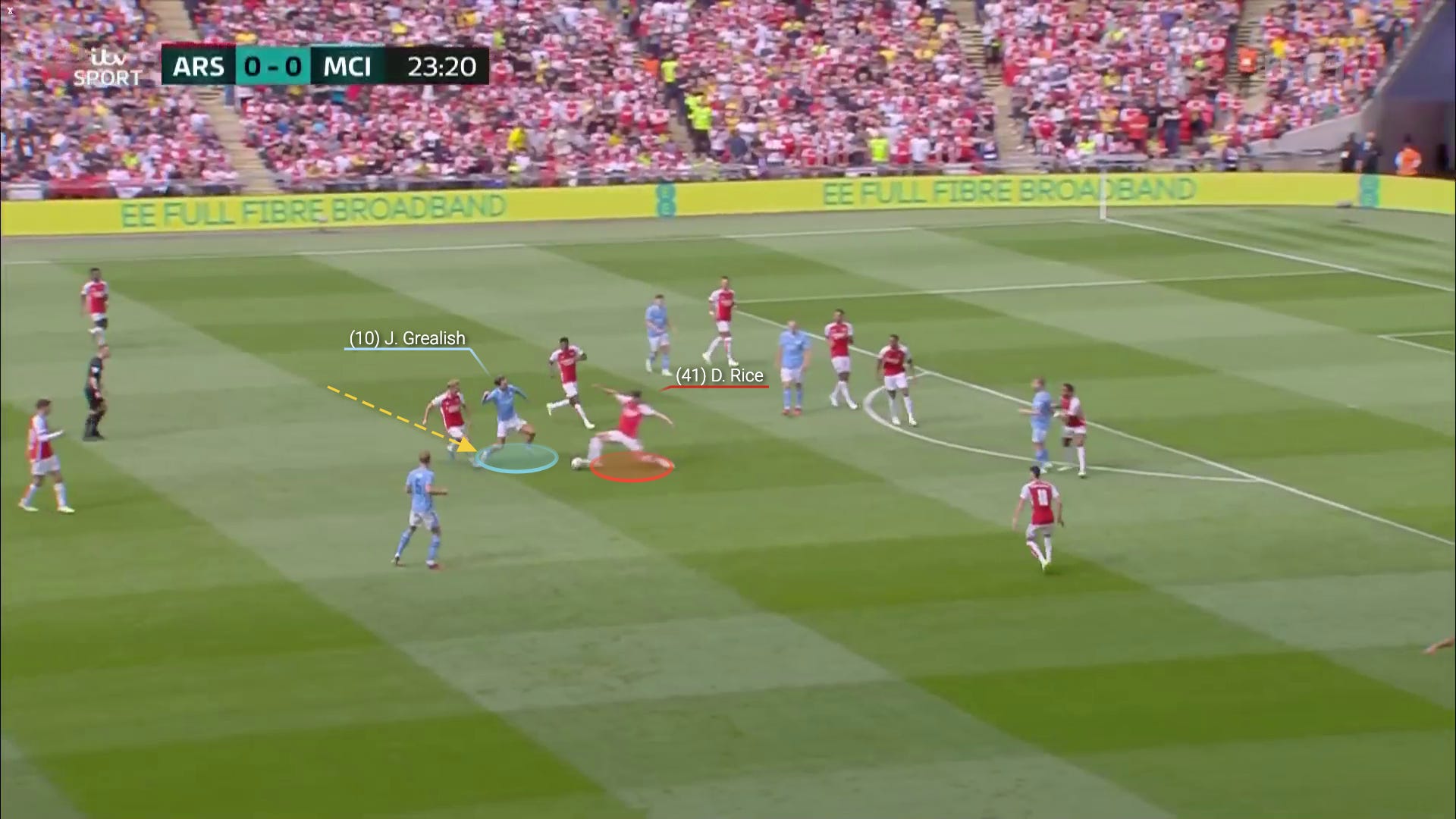
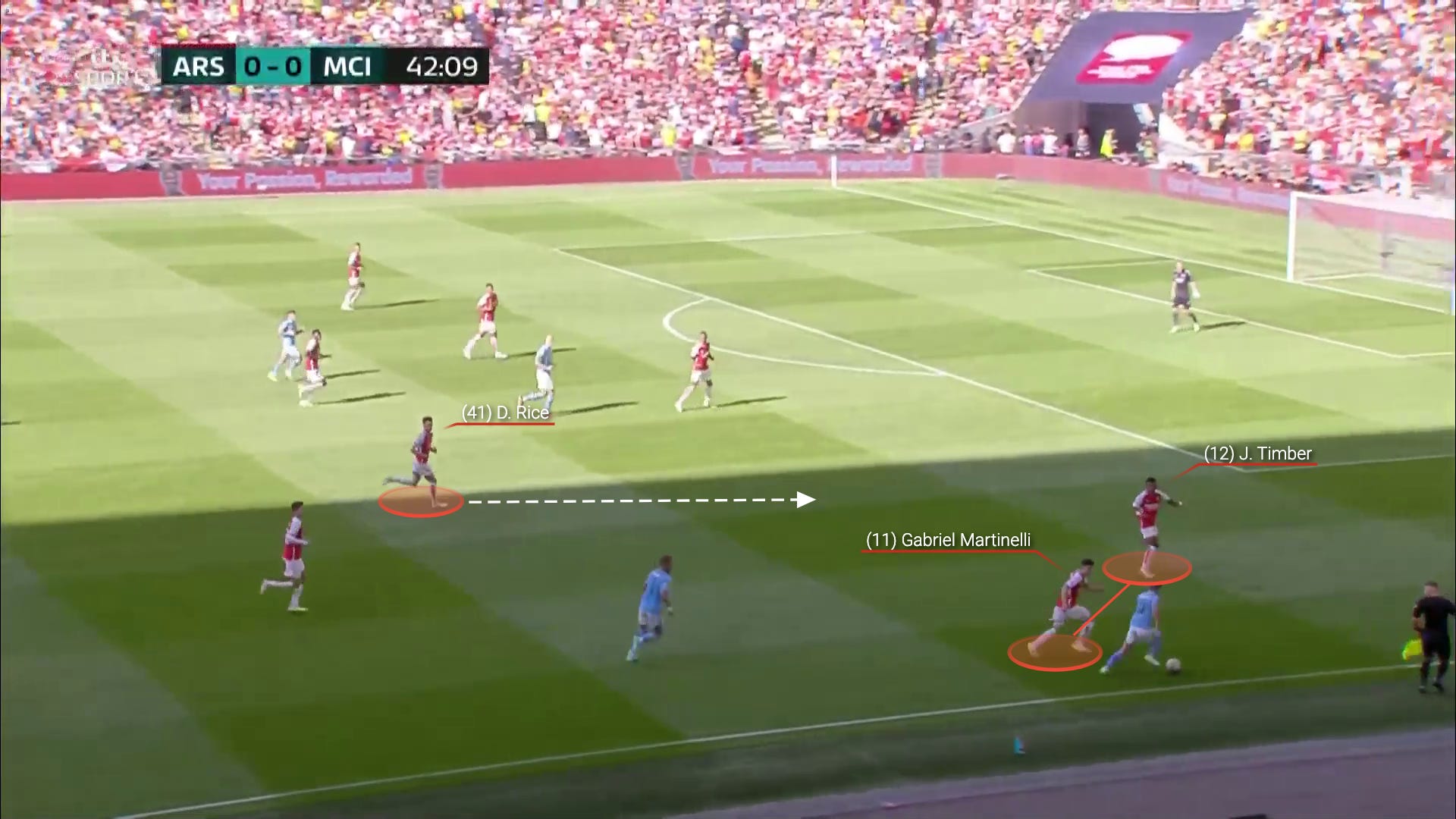

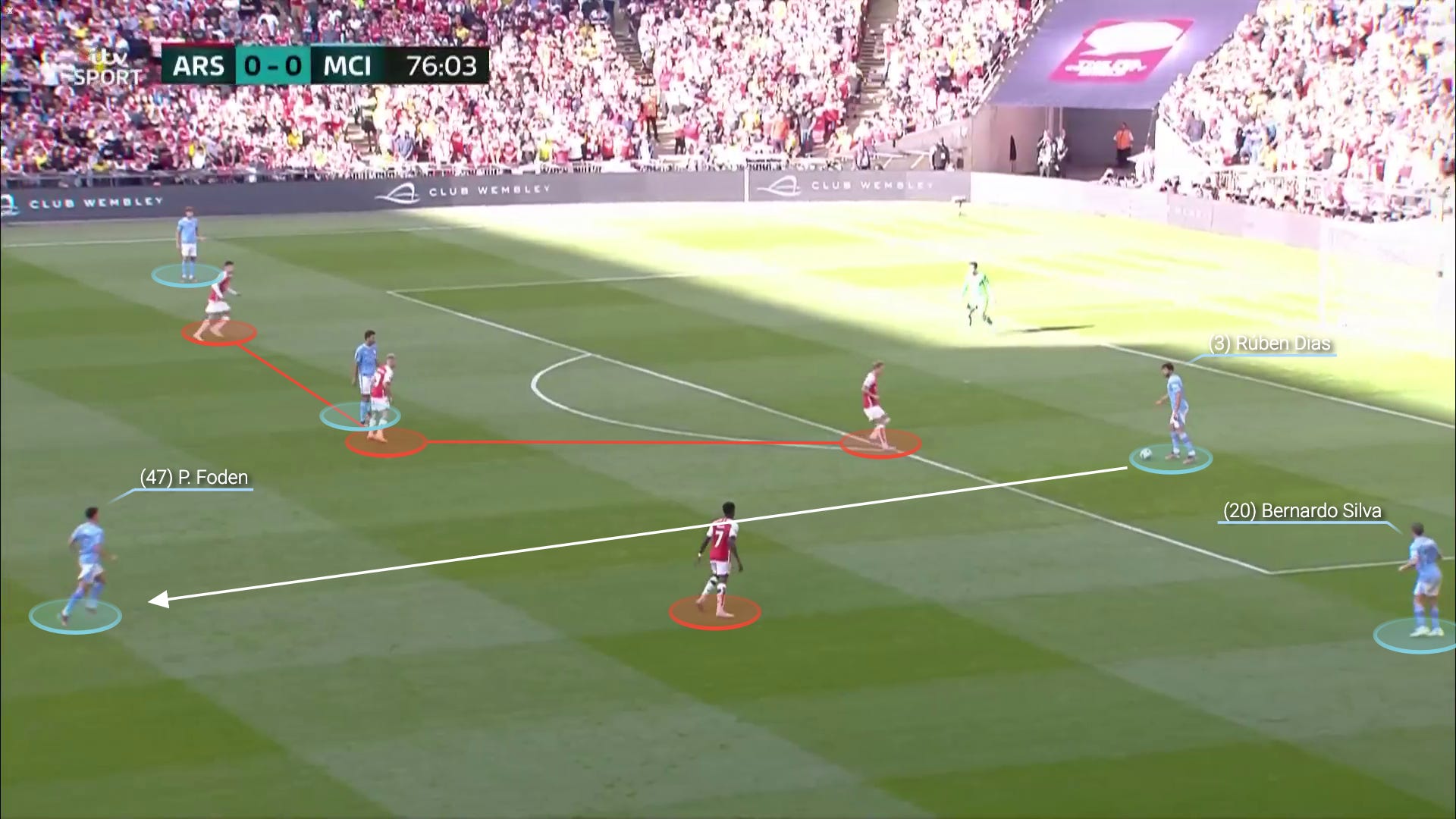
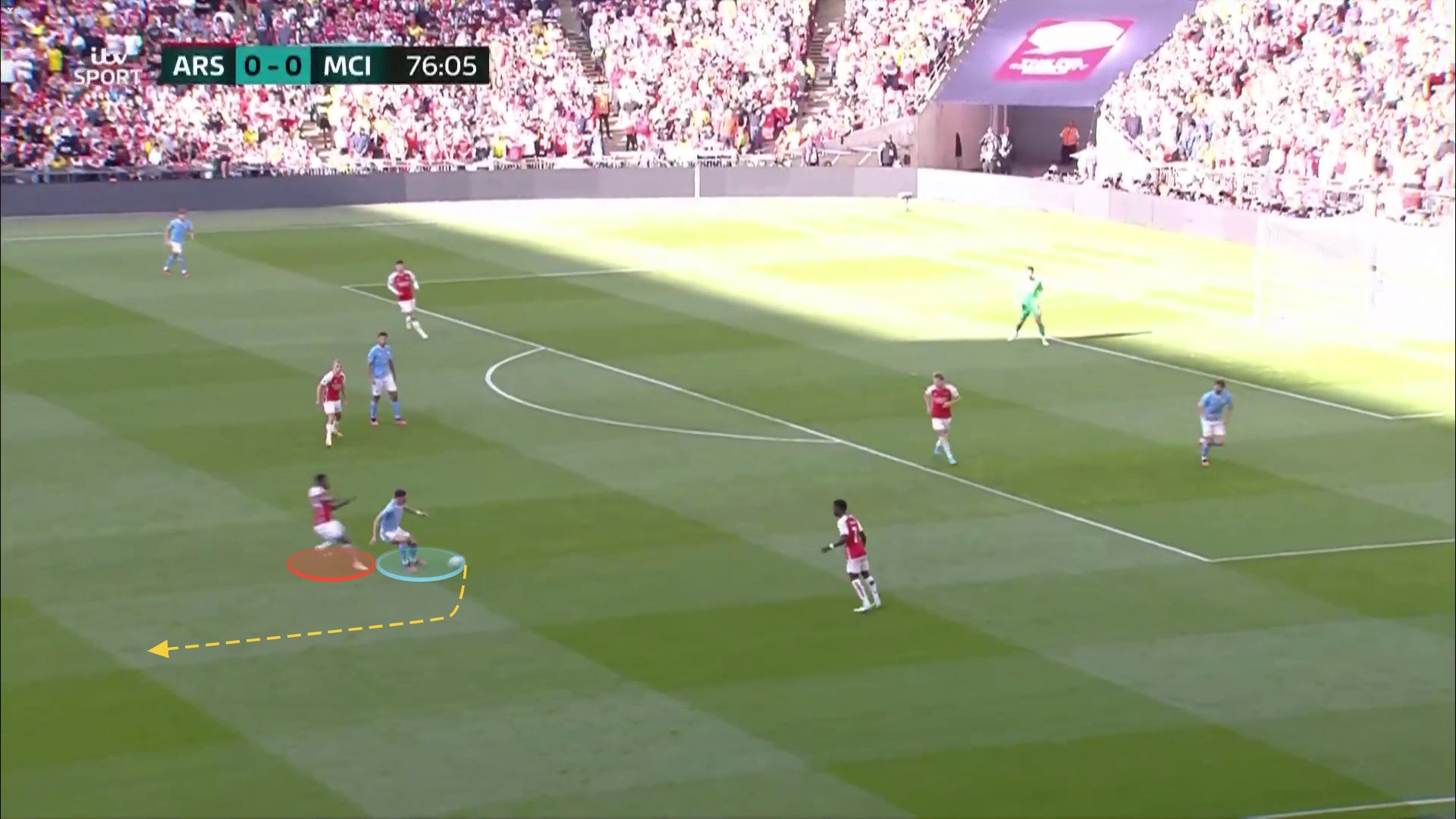
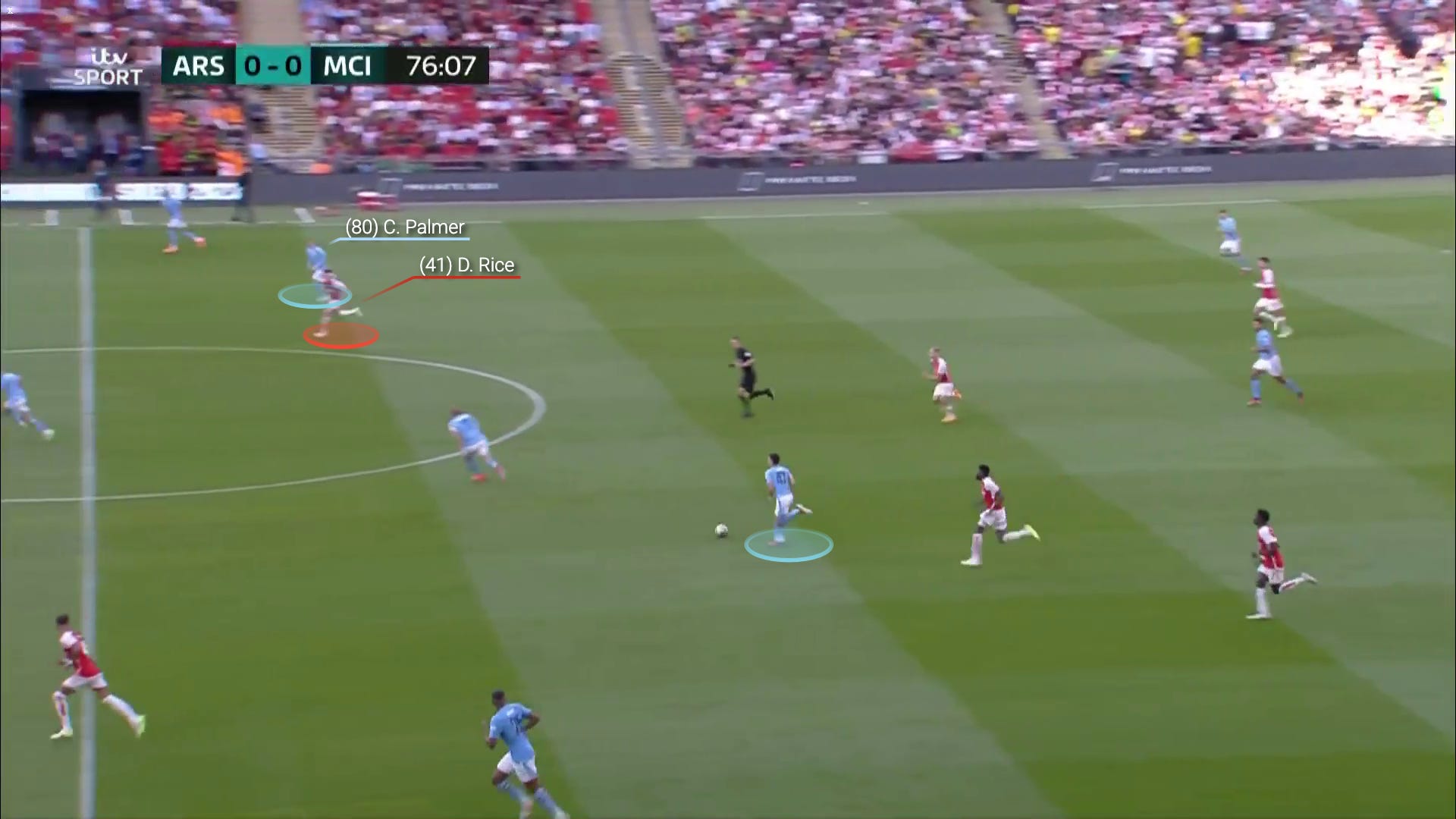
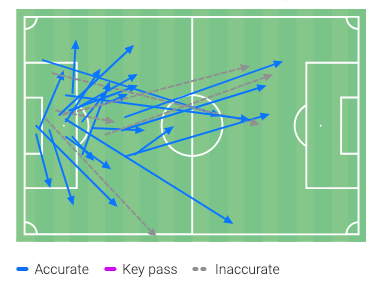
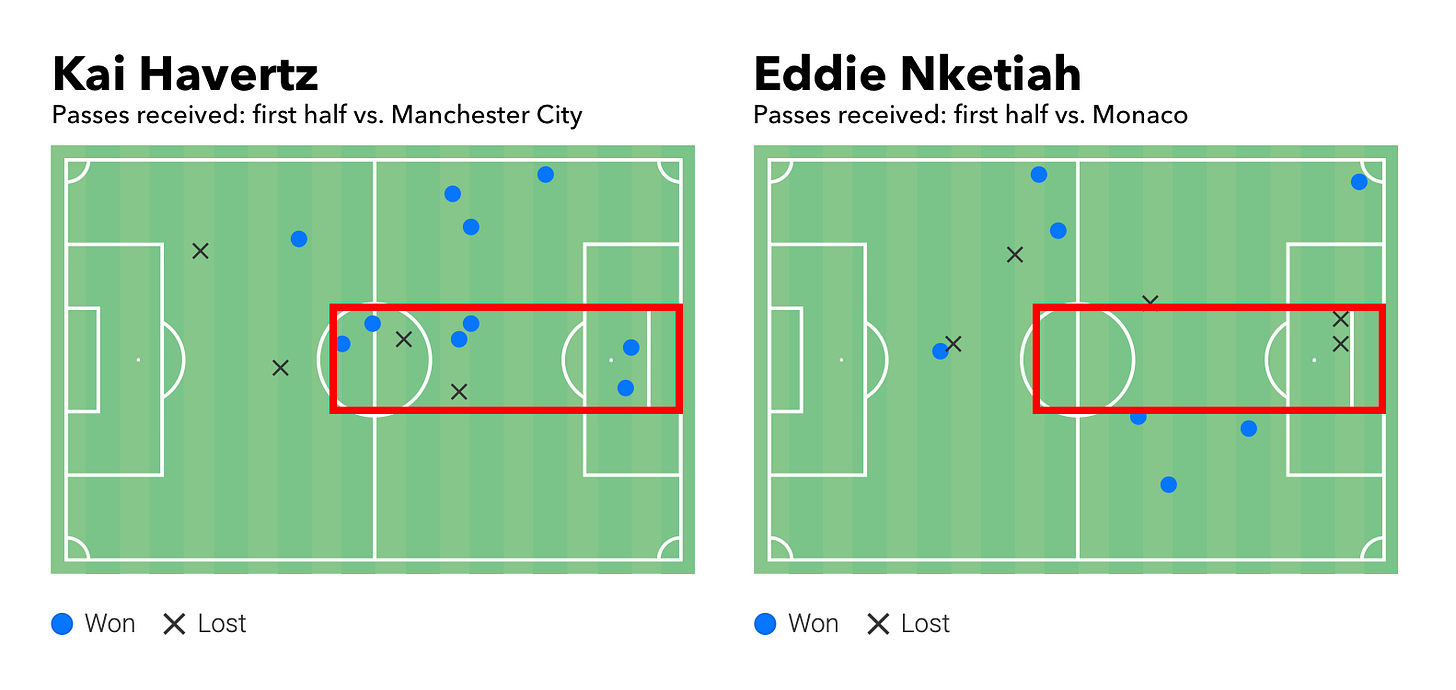
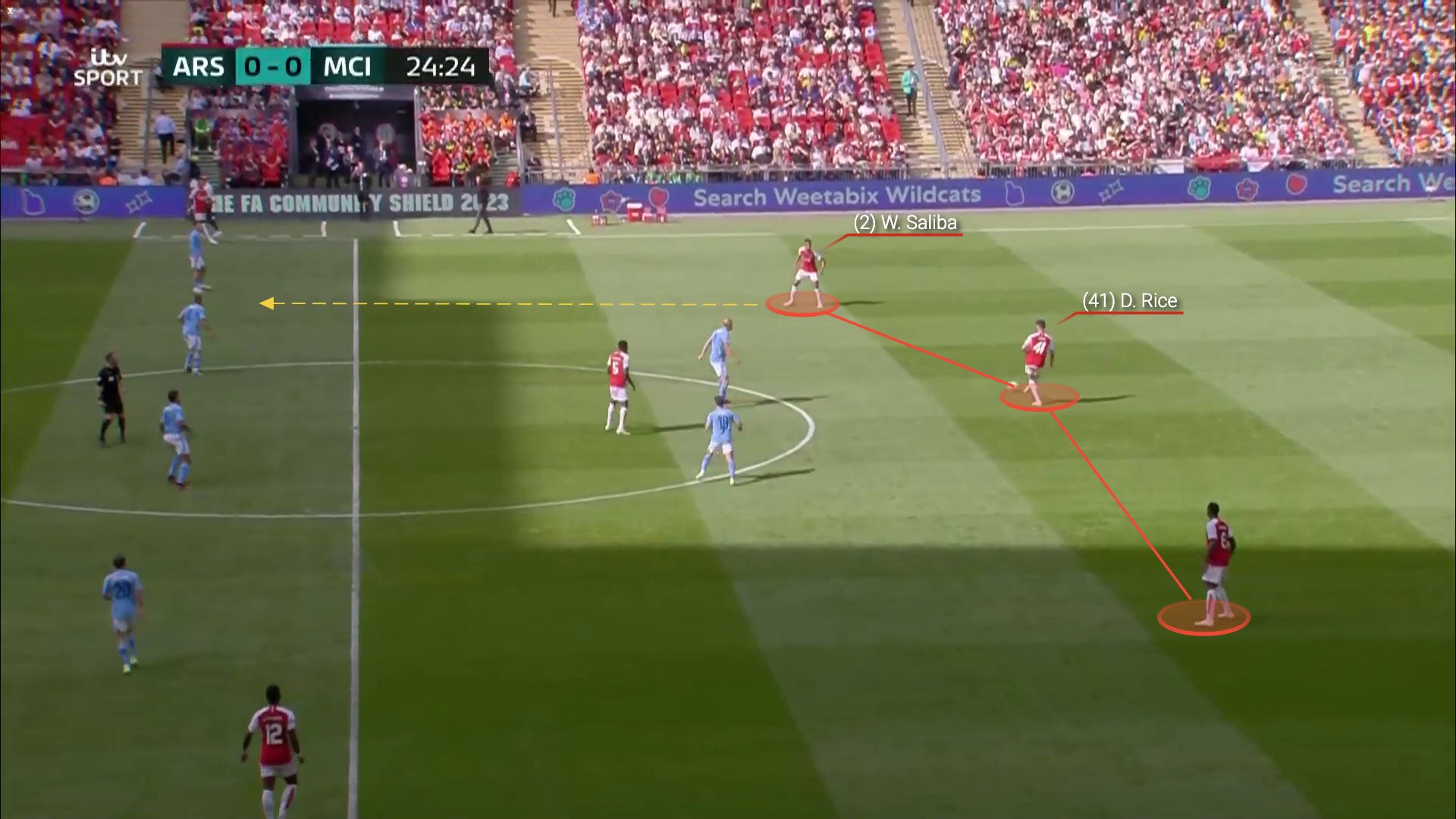
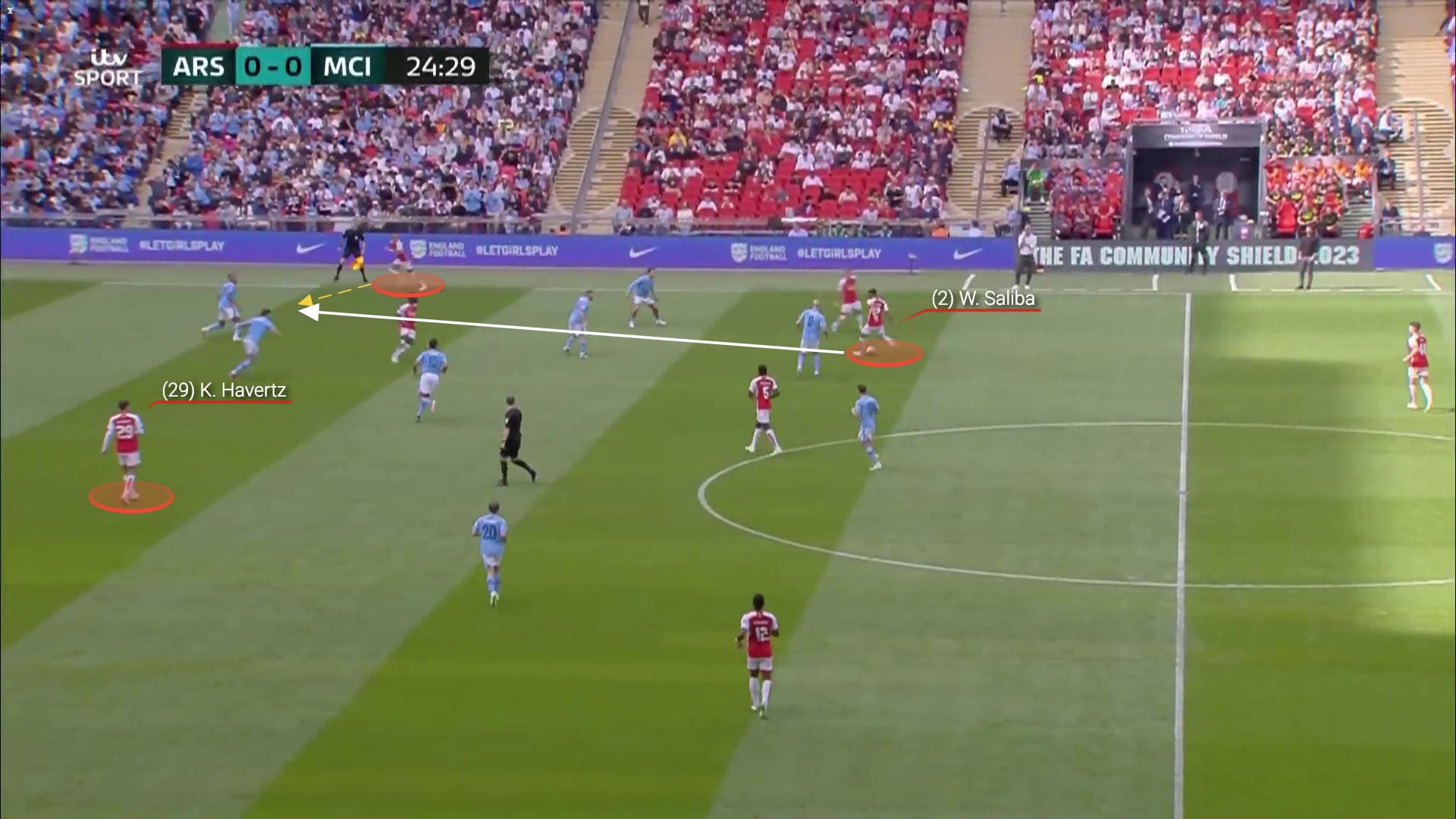
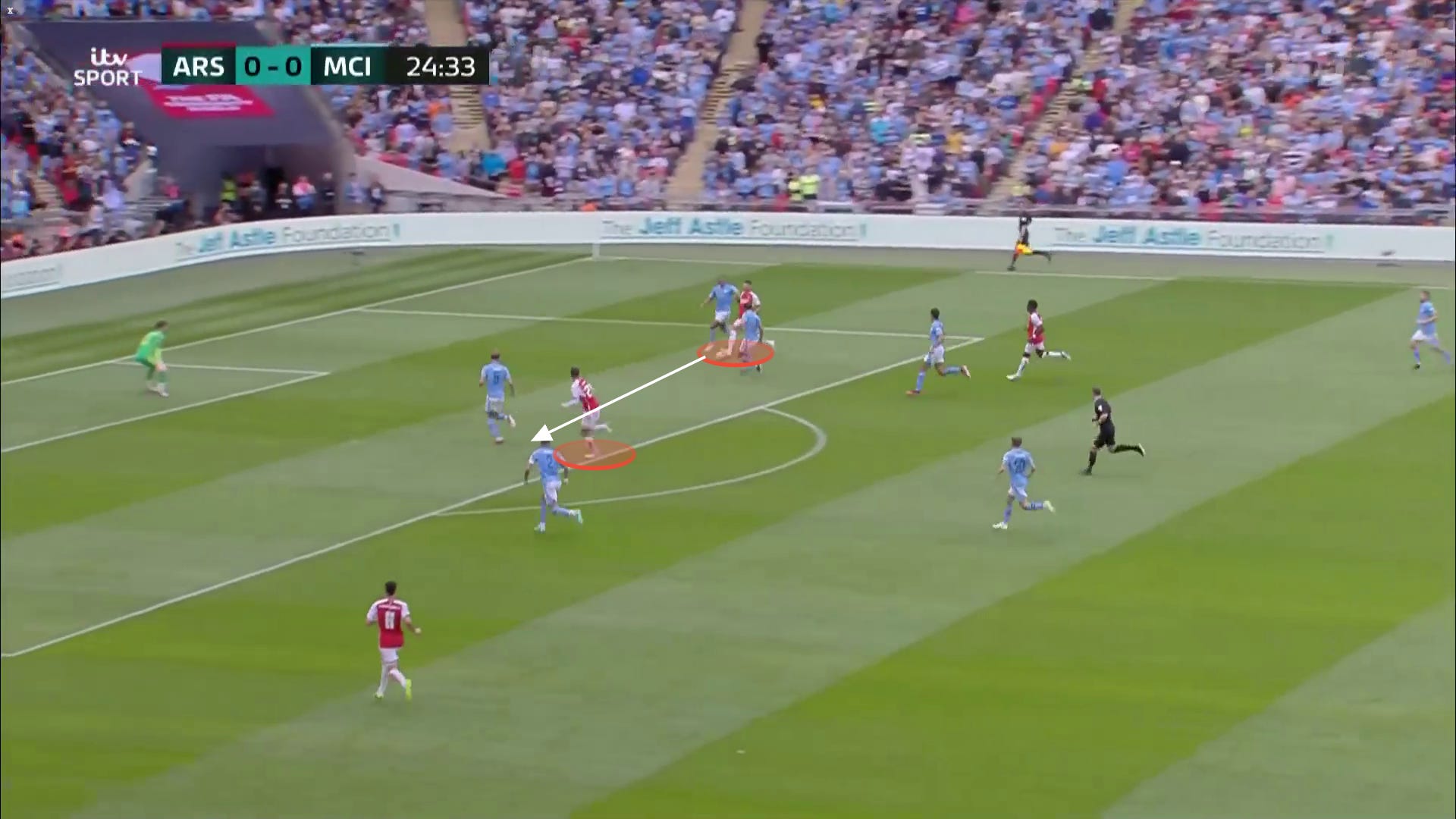
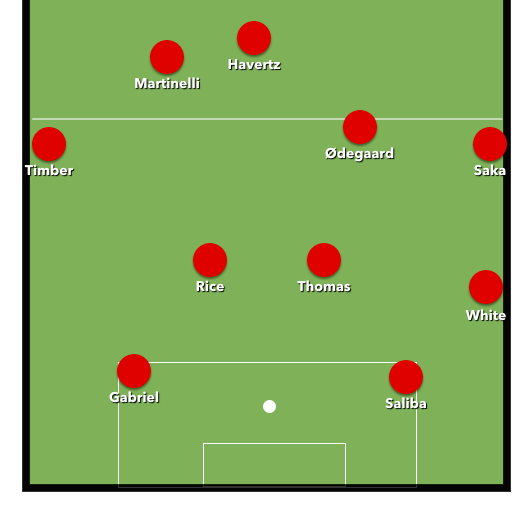



I’m sort of new to watching football so not all of the stuff you’re writing makes sense to me, but I greatly enjoy learning a little bit more every time you post.
This snippet was a big takeaway for me in this piece: "Here was Ramsdale’s distribution, which was solid but a little fizzy and imprecise when directed long towards Havertz"
The previous piece you wrote about David Raya ties into this for me. Elite level distribution will turn defense into attack rather than just ease pressure which is what fizzy, imprecise distribution can do.
Also did you note how high Ortega went up sometimes to knit play...outside his 18yd box, I wonder if that's something you'll see frequently with Raya i.e. a willingness to push higher up than Ramsdale (Ramsdale even notes this in his Tribune piece - how high up Arteta wants him playing).
Billy, you do great work. This was a joy to read.